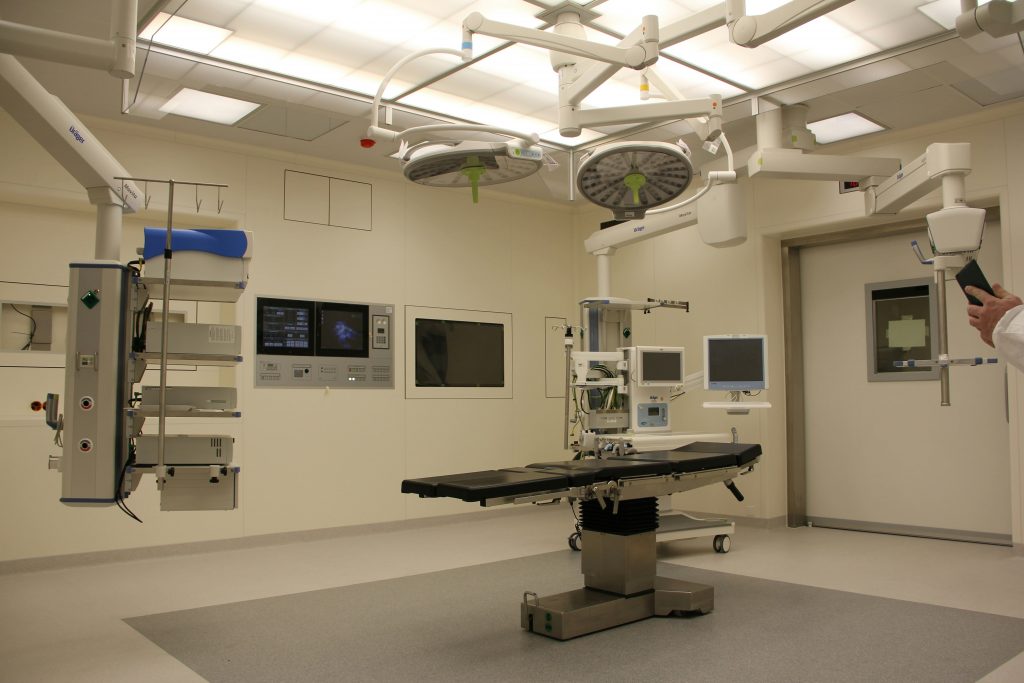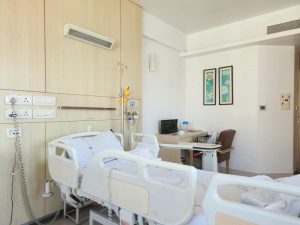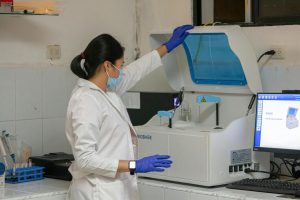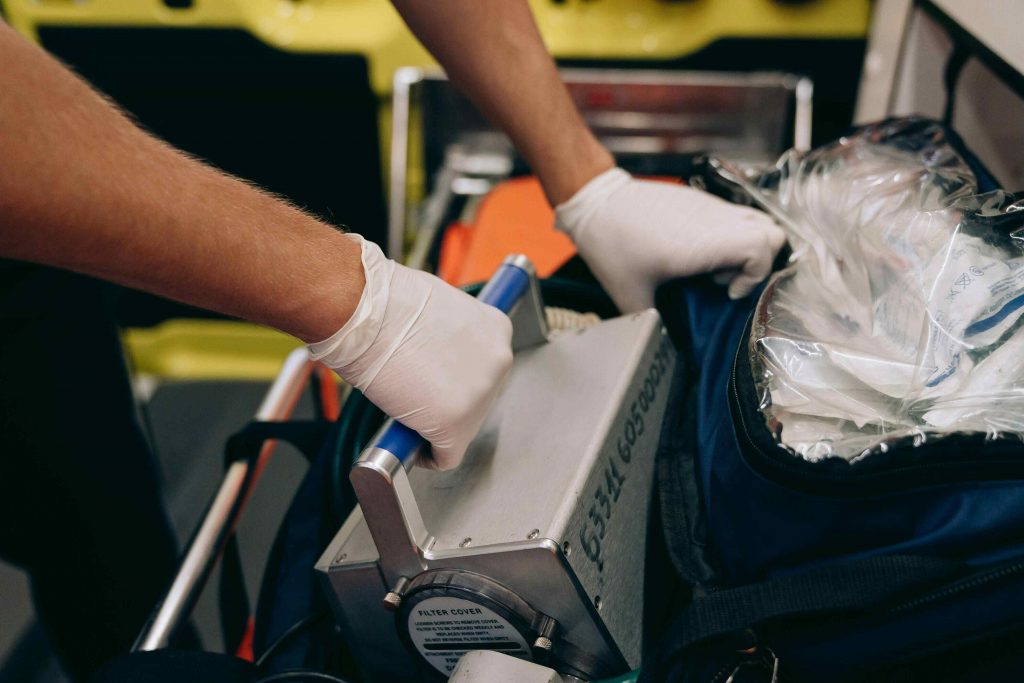Technology is now the most important part of patient care, not just a backup tool. Biomedical engineers are in charge of this, making sure every medical device is designed well and runs safely for better diagnosis and treatment. Their work covers the development, installation, and performance of life-saving tools such as infusion pumps, MRI machines, and surgical robots. They work hand in hand with biomedical equipment technicians, who focus on daily maintenance and repairs, while the engineers guide the process, set the standards, and assures that every device delivers the highest level of safety, precision, and efficiency. In doing so, they directly influence the quality of care patients receive. In doing so, they directly influence the quality of care patients receive through tasks such as biomedical equipment calibration and other essential technology services.
What Is Biomedical Engineering?
Sitting at the intersection of healthcare and technology, biomedical engineering and biomedical management involve designing, testing, and maintaining new medical equipment. The list includes X-ray machines, ventilators, infusion pumps, and hundreds of other systems that save millions of lives daily. While biomedical engineers are often involved in the design and improvement of such equipment, biomedical equipment technicians work alongside them, focusing on the day-to-day maintenance, testing, and repair of these devices in hospitals and clinics. This hands-on role keeps core equipment functioning at peak performance, ensuring it’s ready when patients need it most, whether that’s an infusion pump requiring infusion pumps and defibrillators repair or a ventilator that needs precise monitoring.
That said, instead of creating and moving on, their role requires a more hands-on involvement in the post-maintenance processes. Yet, what truly defines biomedical engineers is their focus on people. Every repair, every test, and every adjustment goes back to ensuring patients are safe and receive the care they need the most.
Why Are Biomedical Engineers Important in Patient Care?
Every time a ventilator breathes for someone who cannot, the final outcome depends on two factors: the device and the biomedical engineer tracking its work, often supported by routine ventilator machine maintenance performed by technicians.
According to research, up to 70% of medical devices imported from advanced countries fail to function properly in lower- and middle-income countries. Such a triggering number mainly results from inadequate training and the lack of proper specialists to work with the imported machinery.
That makes the impact of biomedical engineers clear. Whenever a hospital receives new equipment, they are the ones to install, test, and make sure all the clinical staff know how to use it properly.
Biomedical Engineer Duties
Now that we know that the job of a biomedical engineer mainly revolves around specific medical machinery, let’s dig a bit further into the key duties they perform day-to-day.
Installation and Configuration of Medical Equipment
They manage the whole setup process of any new medical equipment received by the hospital. Their core focus is to:
- Confirm the factory specifications
- Coordinate connections with the existing systems
- Conduct initial performance checkups
For complex systems like MRI scanners or robotic surgery platforms, engineers assure compatibility with hospital infrastructure and workflows. In many cases, these roles are filled through a biomedical engineering staffing agency that can provide specialists with the exact technical expertise needed. This also involves on-site monitoring during early use to guarantee all the clinical staff members know how to handle the machinery properly, including specialized systems that later require anesthesia machine servicing to stay compliant and safe.
Routine Maintenance and Calibration
Biomedical engineer duties involve carrying out scheduled preventive maintenance that includes calibrating sensors, updating the firmware, cleaning mechanical components, and replacing worn parts. Such ongoing maintenance and regular care reduce the need for emergency repairs and help work with the equipment work as long as possible, making biomedical equipment servicing a key part of hospital operations. A skilled biomedical technician often handles these tasks, ensuring devices remain safe and reliable.
Practice shows that equipment lifespans significantly increase and clinical reliability improves with systematic routine checkups. These proactive measures also serve as effective cost reduction strategies by minimizing emergency repairs and extending device usability. Calibration is an inseparable part of this process. Standards like ISO 13485 and FDA 21 CFR Part 820 require accurate calibration recording and documented protocols. This is also included in the list of a biomedical engineer’s duties.
Equipment Testing and Quality Control
Before any medical device can be used to treat patients, a biomedical engineer needs to run quality control checks according to specific protocols.
For instance, ventilators undergo realistic simulation testing using lung models. Engineers verify ventilation accuracy, circuit integrity, pressure delivery, alarm systems, battery function, and software performance.
Testing protocols extend beyond ventilators. For infusion pumps, they validate flow rate accuracy and alarm thresholds. Diagnostic imaging systems are checked for calibration accuracy, image clarity, and radiation safety. Patient monitors undergo signal integrity and alarm responsiveness assessments. Each test ensures the device meets both technical and clinical expectations.
Routine quality control is not only about functionality, but it also supports ongoing compliance. Engineers record all testing results, document any deviations, and maintain logbooks that support audits and accreditation. These records help hospitals meet regulatory frameworks like IEC‑60601‑1 and its related standards.
Responsibilities of Biomedical Engineers
An engineer’s role working in biomedicine acts like a bridge connecting the technical aspects of their profession with patient care, equipment adaptation, and clinical technology improvement. Some of their core responsibilities include:
Troubleshooting and Technical Support
They are the first ones to be called when equipment malfunctions or fails to deliver the expected results. The troubleshooting process then includes:
- Diagnosing the issue through error logs and real-time performance observation
- Repairing or replacing the faulty components, which may include specialized tasks such as surgical equipment repair to restore full functionality.
- Verifying device accuracy and safety after repair through testing or calibration
- Communicating with clinical staff to explain the issue and guide safe usage until full service is restored
In many hospital systems, biomedical engineers spend roughly 40 percent of their day troubleshooting and repairing equipment. The rest is dedicated to preventive maintenance, documentation, and staff support.
Medical Device Innovation and Customization
Biomedical engineers are not directly involved in long-term research projects. Nevertheless, they play an important role in adapting and improving the medical devices based on clinical feedback and current workflows.
They are closely collaborating with vendors and care teams and meeting with manufacturers to iterate on device design and suggest modifications informed by real-world clinical conditions.
Compliance and Documentation
Tracking compliance and creating audit-ready records requires professionals and sharp attention to detail. They are trained to record maintenance and testing activities while aligning the workflows with strict regulatory standards.
This documentation not only supports internal quality programs but also proves compliance during external inspections.
Training and Collaborating with Healthcare Teams
Educating clinicians, nurses, and other technicians on the correct operation and basic troubleshooting is also among biomedical engineering’s responsibilities. This means:
- Developing and delivering hands‑on training sessions for new medical equipment
- Creating user‑friendly guides and quick‑reference materials for clinical staff
- Hosting refresher workshops to reinforce safe operation and emergency procedures
- Participating in interdisciplinary bedside rounds to clarify device usage in real patient scenarios
- Gathering user feedback to inform both clinical workflow and device optimization
Biomedical engineers are also the so-called healthcare team collaborators. They know how to work with specialized equipment and need to translate their technical knowledge into clear instructions. Their engagement with interdisciplinary teams, like doctors, nurses, and staff handling patient transport and mobility services, makes them an inseparable team player with valuable skills.

What Are the Skills Required for Biomedical Engineers?
Biomedical engineer duties and responsibilities make it obvious that these specialists are expected to possess a certain number of soft and hard skills. The list for patient-facing healthcare settings can stretch to several pages, but the core biomedical engineering skills include:
Technical and Engineering Knowledge
They should have a solid grasp of engineering principles. This suggests understanding electronics, mechanics, and software system peculiarities.
When working with ECG monitors or surgical robots, they are expected to work with complex systems and apply physics, biology, and mathematics in medical settings.
Problem-Solving and Analytical Thinking
Healthcare is a very unpredictable industry with emergencies happening more frequently than you can imagine. Biomedical engineers often have quite a short time left for thinking and analyzing the technical issues, especially with a patient’s life depending on their decision.
This requires a structured mind and a calm nature to work under pressure. Engineers who thrive in this space usually rely on a mix of hands-on experience and intuition developed over time.
Communication and Team Collaboration
Strong communication skills help biomedical engineers to prevent equipment misuse and speed up recovery from device failures. Good relations with other team members not only create a pleasant work environment but also build trust between departments. Collaboration also plays a central role in training, process improvement, and identifying where technology can support medical workflows.
Attention to Detail and Precision
Even a minor calibration can lead to serious circumstances in healthcare, and biomedical engineer duties and responsibilities require them to be alert all the time. Every wire connection, pressure setting, and performance test needs to meet strict guidelines. Such an attention to even the minor details is what keeps patients safe and hospitals in compliance with regulatory standards.
Knowledge of Medical Regulations and Standards
They should not only know certain technical standards and healthcare regulations, but also possess a deep understanding and skills to implement those in practice. Engineers who stay current with regulatory changes are better equipped to support long-term hospital readiness.
How to Become a Biomedical Engineer?
Getting into biomedical engineering requires a strict blend of ongoing learning skills, readiness to get your hands dirty, and figuring out how machines and medicine work together. Most will get a job with a bachelor’s degree in the corresponding field, but degrees in mechanical or electrical engineering can also lead you here when paired with relevant courses. Many new graduates also gain experience through short-term roles, which often lead to full-time opportunities when hospitals are ready to hire a biomedical engineer for their permanent team.
- Start with a solid degree. Look for undergrad programs in biomedical engineering that are ABET-accredited.
- Pick the right electives. Courses in physiology, medical devices, or even how hospitals are run can give you an edge.
- Don’t skip internships. Whether it’s a hospital, research lab, or a company making surgical equipment, that early exposure is important.
Biomedical engineer duties and responsibilities go far beyond just fixing machines. These are professionals who are actively involved in patient care by keeping the equipment safe and ready for use at all times. With the growing reliance on medical technology, their role has become more important than ever in saving lives.






